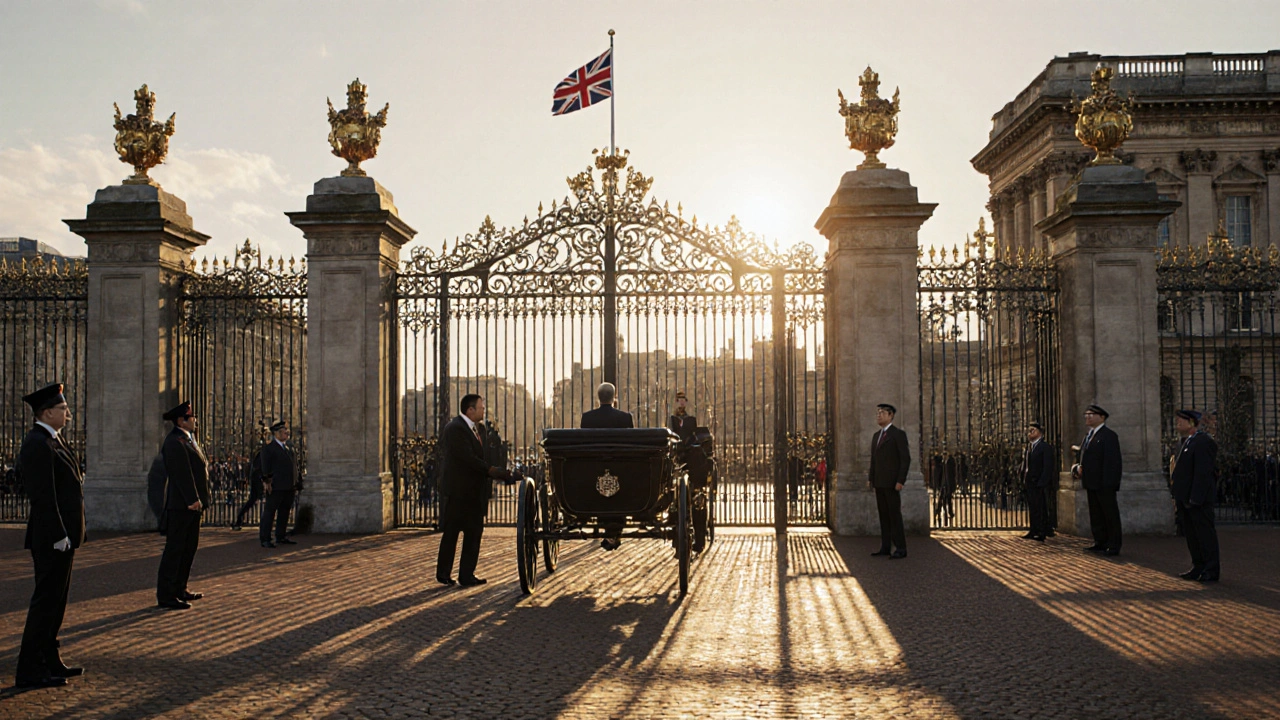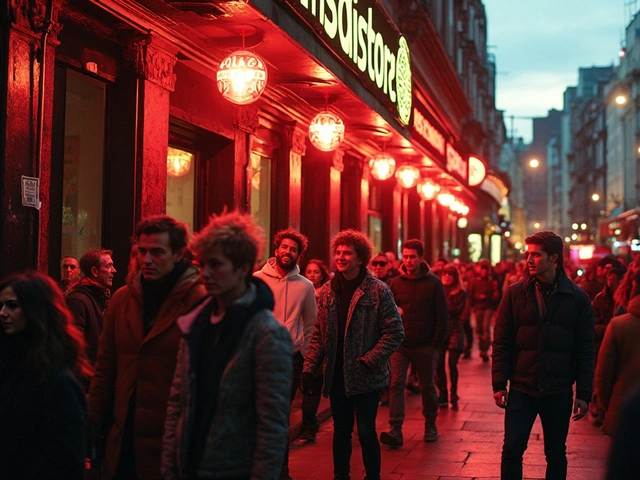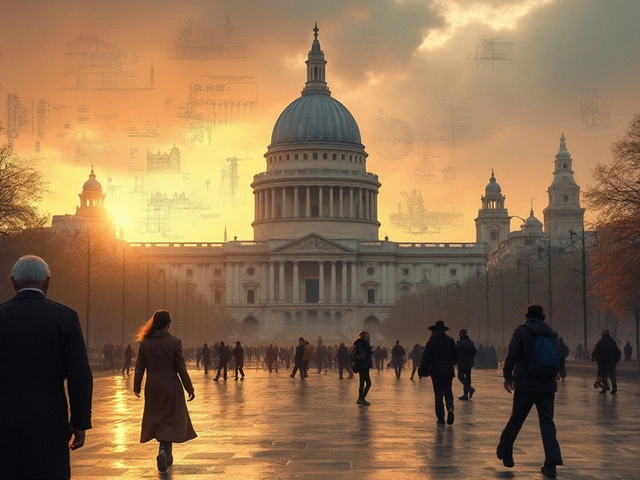You can't say you know London if you haven’t stood in Trafalgar Square at least once. Smack bang in the middle of Westminster, it’s more than just a crossroads for buses and taxis. It’s where Londoners celebrate big wins—think England's football victories—and rally for protests or global causes. Because Trafalgar Square has always felt like London’s open living room.
It’s not just tourists snapping shots of Nelson’s Column or the four famously enormous bronze lions. Londoners pop by at lunchtime, meet friends by the fountains, or simply cut through on the way to the National Gallery—free entry, by the way, so it’s worth popping in while you’re here. And if you’re looking for a spot to join the Diwali lights, the Christmas tree from Oslo, or even watch a live demonstration unfold, this square is top of the list.
The location is brilliant: walkable from Leicester Square, minutes from Charing Cross station, and you can grab a flat white at one of the independent cafés tucked just off the square. Public toilets actually exist (a luxury in Central London!), and you can easily rent a Santander Cycle if the Tube isn’t your thing. The square is always buzzing but knowing little hacks—like when the crowds thin out or where to actually find a quiet bench—makes visiting way more enjoyable.
- Trafalgar Square’s History in the Heart of London
- National Events, Rituals, and Everyday Life
- Getting Around and Local Tips
- Hidden Stories, Oddities, and Modern-Day Surprises
Trafalgar Square’s History in the Heart of London
When folks talk about Central London, Trafalgar Square is usually up there with Big Ben and Buckingham Palace. The place didn’t even exist until the 1800s. Before that, you’d have seen the stables of the royal mews, which is a fancy way of saying the royal stables. In 1830, King George IV wanted something more fitting, so the area got cleared out and named after the Battle of Trafalgar, where Admiral Nelson led the British Navy to victory over France and Spain in 1805. If you’re wondering why Nelson’s Column is such a big deal, that’s the reason—he’s literally the hero the square celebrates.
By 1844, the basic layout of Trafalgar Square was sorted—big open space, central statue, fountains, and a few other monuments. Architect Charles Barry, best known for designing the Houses of Parliament, was the man behind its look. Today, the square is packed with references to key moments from UK history: four lions surround Nelson’s Column, and several other statues honour leaders like King George IV and General Havelock. Oh, and the Fourth Plinth? That was left empty for decades but now hosts changing pieces of modern art, keeping things fresh.
Here’s a quick breakdown of who and what you’ll spot:
- Trafalgar Square: The go-to place for major London events
- Nelson’s Column: 52 meters high—hard to miss
- The Lions: Sculpted by Edwin Landseer, using actual dead lions for reference
- National Gallery: Sits right on the north side—free entry
- Fourth Plinth: Rotating art by local and international artists since 1999
It’s not just about statues and pigeons either. Major stuff has gone down here. Anti-apartheid protests, New Year’s parties, Pride events, and even the UK's victory celebrations when England won the World Cup in 1966. It’s the default backdrop for big moments that matter in the city and the country. Here’s what the foot traffic and events have looked like in recent years:
| Year | Major Event | Estimated Attendance |
|---|---|---|
| 2012 | Olympic Games Celebrations | 50,000+ |
| 2019 | Pride in London Parade | 1,500,000+ |
| 2023 | Anti-war Protests | 200,000+ |
So, next time you’re waiting for the 24 bus at Trafalgar Square, know you’re standing in the middle of 200 years’ worth of London history—and there’s probably something big going on around the corner.
National Events, Rituals, and Everyday Life
Trafalgar Square isn't just a backdrop for Instagram photos—it’s the unofficial HQ for major moments in London. Over a million people flock here every year for everything from world cup screenings to climate marches. It’s the first place you’ll see a sea of Union Jacks when there’s a royal wedding, and it’s where all walks of life gather for protests, vigils, and big parties, giving the square its rep as a London landmark.
Let’s get specific. Ever wondered why there’s a giant spruce tree in Trafalgar Square every December? That’s Norway’s thanks to the UK for help during WWII, and it’s been a yearly gift since 1947. During Chinese New Year, the celebrations spill over from Chinatown—dragon dancers weave around the Square, food stalls pop up, and you’ll hear plenty of music. London Pride? The Square fills up with parades and joyful crowds, and security is always tight but organised, so everyone feels safe.
- Public viewing events: The giant screens for big football matches or royal occasions always draw huge crowds. Your best view is usually from the steps facing the fountains.
- Commemorations: Armistice Day and Remembrance services take place here, where poppy wreaths cover the base of Nelson’s Column every November.
- Seasonal rituals: Besides the famous Christmas tree lighting, Diwali in the Square is a must-see, with dance, crafts, and authentic eats.
| Annual Trafalgar Square Events | Approximate Attendance |
|---|---|
| New Year’s Eve Celebrations | 100,000+ |
| Pride in London Parade | 50,000+ |
| Christmas Tree Lighting | Over 10,000 |
| Armistice Day Memorial | 4,000+ |
But it’s not just big events. On an average weekday, you’ll see office workers perched on the antsy lions with Pret salads, street performers busking by the Fourth Plinth, and kids chasing pigeons (despite warnings). Police and city wardens keep the whole place running smoothly, so it feels safe even late at night. Everything that happens here—whether a full-scale national rally or just a lunchtime stroll—ends up feeding into London’s sense of pride and unity.
Getting Around and Local Tips
If you’re heading to Trafalgar Square, getting there is a breeze. Charing Cross station is basically across the street—Northern and Bakerloo lines make it dead simple, and there’s a direct National Rail connection too. Embankment and Leicester Square stations are only a few minutes’ walk. Forget about driving; Central London traffic is savage and parking costs an arm and a leg.
Buses? Loads of them stop right in front. Key routes like the 24, 29, and 176 run late, which is handy if you stay out into the evening. If you prefer cycling, there are Santander Cycles docking stations dotting the area. The road vibe is busy but easy to navigate if you’re careful—cyclists weave with the double-decker buses all day.
For accessibility, the square is mostly step-free, with drop kerbs and ramps making it decent for wheelchairs or prams. There are public toilets (you’ll pay 50p, but that’s standard for London), and there’s always a Pret or Caffè Nero nearby for a warm-up if it’s drizzly.
Phone signal is strong, but if you need free Wi-Fi, you can hook up to O2 Wi-Fi around the square. If you’re worried about safety at night, police presence is solid—after events or football matches, you’ll see the Met out in force. One local shared this in a BBC feature:
"If you’re meeting up in London, you can’t go wrong with Trafalgar Square. There’s space, it’s central, and you can always find someone if you get lost."
Watch out for big crowds during public events—New Year’s Eve, Chinese New Year, and the Pride Parade turn the square into a sea of people. Check the event calendar on the Mayor of London’s website to dodge or join the rush, depending on your mood.
Here’s a quick look at handy Trafalgar Square facts for logistics:
| Transport | Detail |
|---|---|
| Nearest Tube | Charing Cross (1 min walk) |
| Main Bus Routes | 24, 29, 176, 139, 6, 9, 11, 23, 87 |
| Cycle Hire | Santander Cycles Docking (St. Martin’s Place) |
| Wifi | O2 Free Wi-Fi zone |
| Public Toilets | Yes, South-East Corner (£0.50) |
If you need a quieter corner, sneak up onto the raised terrace on the north side by the National Gallery steps—you’ll get the best view without dodging crowds or pigeons.
Hidden Stories, Oddities, and Modern-Day Surprises
Trafalgar Square has more oddball secrets than most people expect. First off, that empty plinth in the northwest corner? It’s called the Fourth Plinth, and instead of getting a statue like the other three, it’s become a rotating art spot. Every year or so, a new piece gets plonked on there—giant thumbs-ups, blue cockerels, or even a massive swirl of whipped cream topped with a cherry. Some locals argue over which piece was the weirdest, but that’s kind of the fun—there’s always fresh art to wind up or inspire.
Pigeons used to rule the roost here, and you’d see sellers hawking bird feed until the early 2000s. The Mayor’s office brought in fines to cut down on the feathers, and now you see far more Instagrammers than pigeons on most days. One old Londoner even joked, "You used to measure your visit by how much birdseed you got through and how much landed on your coat." Serious throwback.
The fountains aren’t just decorative either. On big occasion days—like World AIDS Day or even Pride—those fountains get dyed bold reds or rainbow colours. It makes for a dramatic photo, and it shows just how public a space this really is for causes and celebration. Want the best shot? Head out early or get there just as the sun is dropping behind the National Gallery.
| Curious Fact | Details |
|---|---|
| Fourth Plinth art rotation | New artworks arrive every 18-24 months, chosen by a public panel. |
| Pigeon ban | Pigeon feeding was officially banned in 2003. Fines can reach £500. |
| Christmas Traditions | Oslo has sent a Christmas tree every year since 1947. |
| WI-FI Coverage | The square has public free Wi-Fi provided by Westminster Council. |
This spot’s also a playground for street performers. Don’t be shocked if you see a floating Yoda, a breakdance crew, or a guy playing ‘London Calling’ on an accordion. You’ll want some change handy if you like what you see, but always keep one eye on your bag—pickpockets know crowds are easy targets.
The Trafalgar Square lions aren’t identical, even if they look it. They’re all slightly different, and legend has it, the sculptor Landseer used a lion corpse from London Zoo to get the details right—except the paws, which ended up weird because the carcass got a bit… well, rotten. Peculiar, but true.
“Trafalgar Square remains a living symbol for all Londoners—shaped every day by those who gather, protest, celebrate, or just pass through.” — Tanya Kovats, artist and public sculptor
Every Londoner has at least one Trafalgar Square story. Whether it’s watching a World Cup match on the big screen, counting down New Year’s, or just dodging buskers and finding an unexpected protest, there’s always something happening that catches you off guard. That’s what keeps it fresh—no matter how many times you pass through, you never get exactly the same square twice.






